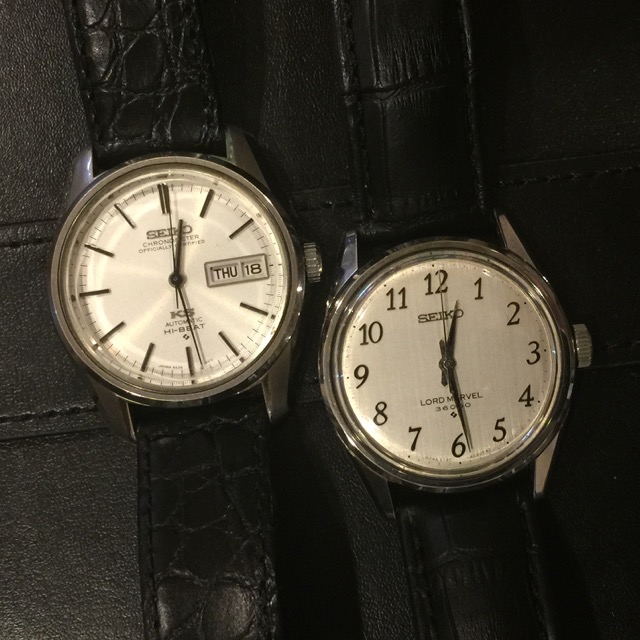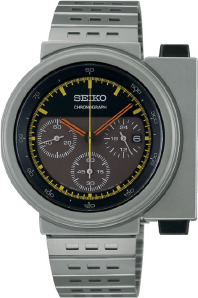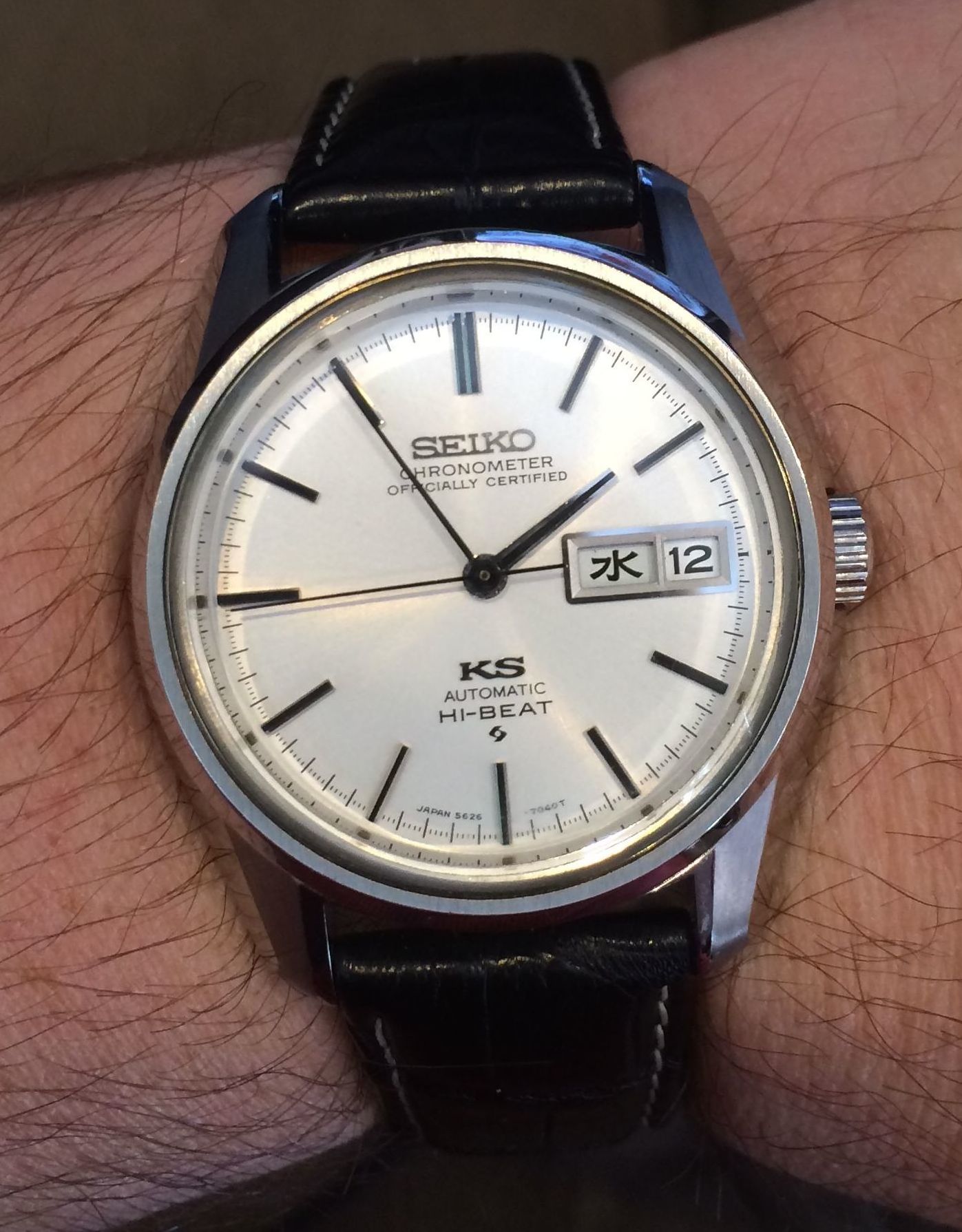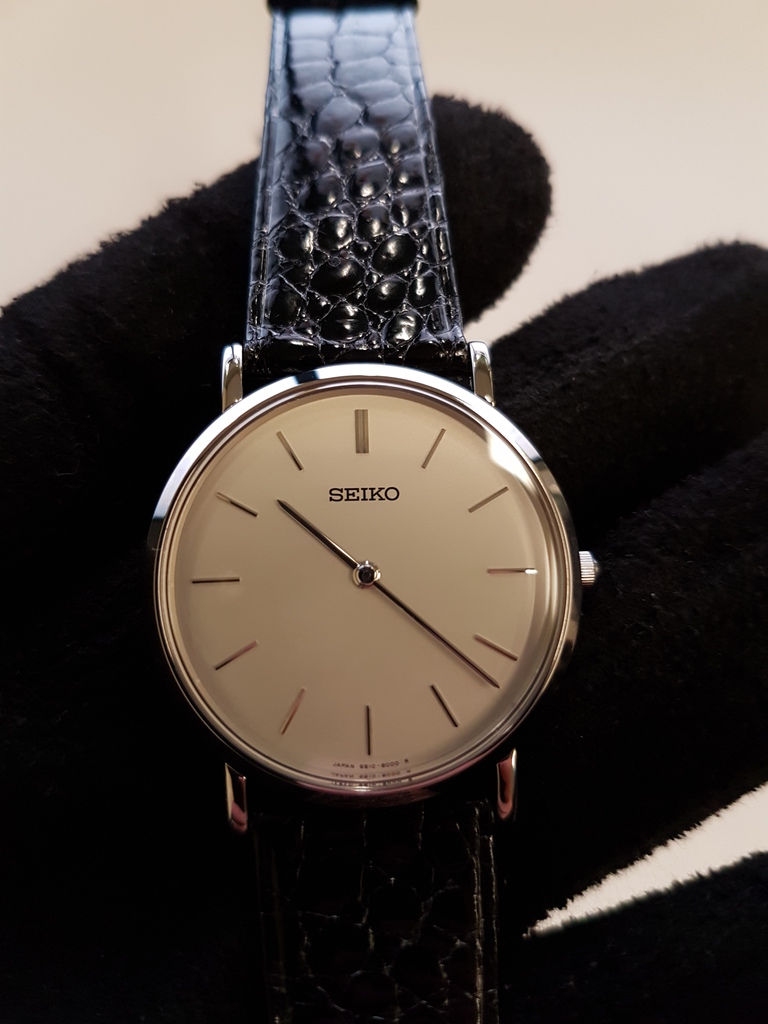When traveling to new cities, I often stop by a local watchmaker and dealer for conversation and to see what they kept to sell. I ran into this model Seiko Lord Matic at just such a shop in San Francisco, falling for the faceted crystal, green dial, and arrowhead markers, but felt that his price was delusional. This set off a 6-month quest to find a better example at an affordable price.
Lord Matic was a midrange brand for Seiko in the 1970s, serving as something of a fashionable alternative to their popular quartz line. As the name suggests, these watches featured automatic movements and a variety of case, dial, and crystal styles. Most of the cases combine pillow-style angles and curves and are made of polished steel. The crystals are similarly varied, with the highlight being deeply faceted as on my own 52LM. Then there are the bright, colorful dials and inventive markers, ranging from orange to red to blue to green.
This particular model is notable for the lovely green dial, arrowhead markers, and faceted crystal. Let’s start with the columnar sunburst dial: It varies from deep to bright green depending on the angle and the light. Although quite dated by today’s standards, it’s a fantastic look! Then there are the unusual arrowhead markers, which were rarely used in the Seiko line and unknown outside. The hands aren’t much to look at, but I also love the bilingual day wheel, preferring to leave it on the Japanese setting.
Finally, note the “lightning bolt” or “double triangle” logo at 6:00. This indicated Daini Seikosha as the manufacturer, and remains in use today by Daini’s successor company, Seiko Instruments.
As shown in the catalog, my Lord Matic originally came with a nifty bracelet with hexagonal links. But as is common with Japanese watches, this was replaced somewhere in the past with a period-correct but mismatched bracelet from a Seiko Quartz model. This one doesn’t quite fit my wrist either, so I would love to find the original bracelet but that’s a grail quest on its own!
Lord Matic watches came with movements from the respected 5600 stream as well as the later 5200 stream. Both movement families are excellent and robust designs, but it was Daini’s 5200 that would live on after the quartz crisis, serving as a basis for the excellent 4S family of the 2000s. Still, I prefer Suwa’s smooth and slick 5600, as found inside my favored King Seiko. One particular quirk of the 5200s is that the winding mechanism remains engaged when the crown is in position 2 to set the date.
As noted on this dial, this is a “Special” watch in Seiko’s line, with a “Hi-Beat” 5216 movement ticking at 28,800 A/h. This is a surprising level of sophistication for a mass-market watch – even the Swiss hadn’t yet widely deployed 8 Hz movements in the early 1970’s.
I finally located a nice example on eBay at a much more affordable price. That’s what I’m wearing today.
The bracelet is mismatched and slightly too small for me. So this watch doesn’t get much wear, no matter how much I respect the look of the crystal and dial.
I’m wearing and blogging about a different watch from my collection each day of April, 2018. Check back here for our “Watch A Day” series, follow us on Twitter and Instagram, and like us on Facebook!
Year
Country
Brand
Style
Material
Movement









Leave a Reply